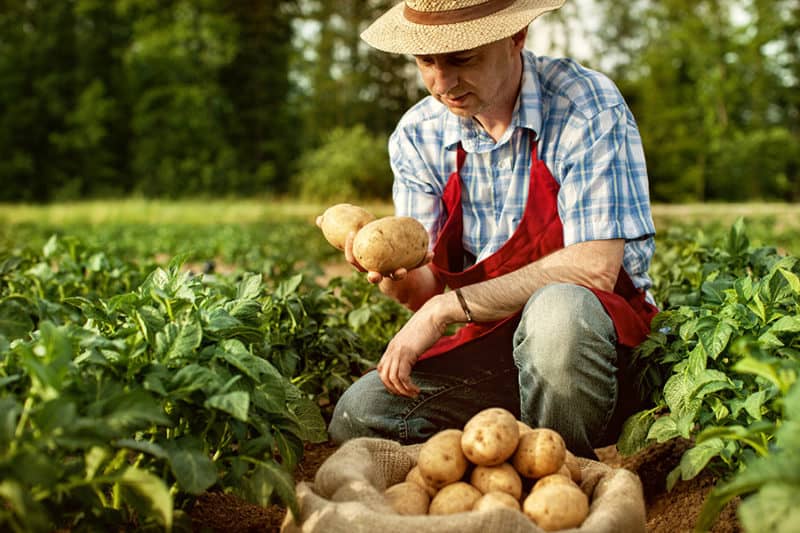Unlocking the Secrets of Substantial Farming: A Deep Dive

So, you've heard whispers about "substantial farming," huh? Sounds kinda fancy, right? Like it involves monocle-wearing farmers and golden tractors. Well, let's ditch the stereotypes and dive headfirst into the fascinating world of substantial farming. It's not as glamorous as it sounds (sorry to burst your bubble!), but it's incredibly important for feeding the planet and, let's be honest, pretty darn interesting.
What on Earth is Substantial Farming?
In a nutshell (or should I say, a bushel?), substantial farming is about producing a significant amount of food. We're talking big yields, folks! It's not just about chucking some seeds in the ground and hoping for the best; it's about employing strategic techniques to maximize crop production. Think of it as farming on steroids – but instead of muscles, we're building bountiful harvests.
Now, "substantial" can be subjective. What's substantial for a small family farm might be a drop in the bucket for a large-scale operation. But the core principle remains the same: efficient and effective food production. We're talking about feeding a growing population, which, let's face it, is a pretty substantial challenge in itself!
The Pillars of Substantial Farming
Several key elements contribute to successful substantial farming. Let's break them down:
1. Optimized Land Management:
This isn't just about plowing fields. It's about understanding your soil, its nutrients, its drainage, and its overall health. We're talking soil testing, crop rotation, and even employing advanced techniques like precision agriculture to make sure every inch of land is working as efficiently as possible.
2. Advanced Technology:
Forget the pitchforks and shovels! Modern substantial farming relies heavily on technology. Think GPS-guided tractors, drones for crop monitoring, and sophisticated data analysis to optimize yields. It's like having a high-tech farming assistant at your fingertips.
3. Efficient Irrigation Systems:
Water is life, especially for crops. Efficient irrigation means delivering the right amount of water at the right time, minimizing waste and maximizing crop growth. This could involve drip irrigation, sprinkler systems, or even advanced water-harvesting techniques.
4. Strategic Crop Selection:
Choosing the right crops is crucial. You need to consider factors like climate, soil type, market demand, and, of course, your farming goals. It's a bit like choosing the perfect team for a championship game – every player (crop) has to be in the right position.
5. Integrated Pest Management (IPM):
No one likes pests. IPM is all about minimizing pest damage through a combination of strategies, including biological control, crop rotation, and targeted pesticide application (when absolutely necessary). It's about keeping pests in check without resorting to chemical warfare.
The Challenges of Substantial Farming
Okay, let's be real. Substantial farming isn't all sunshine and rainbows. There are challenges:
- High initial investment: The technology and infrastructure needed can be expensive.
- Environmental concerns: Intensive farming can have negative impacts on the environment if not managed sustainably.
- Labor demands: Even with technology, substantial farming requires skilled labor.
- Market volatility: Prices for agricultural products can fluctuate, impacting profitability.
Sustainable Substantial Farming: The Future of Food?
The beauty of substantial farming is its potential to be sustainable. By combining high yields with environmentally responsible practices, we can feed the world without wrecking the planet. This means focusing on things like reduced chemical use, improved water management, and soil conservation. It's a balancing act, for sure, but a crucial one.
Substantial Farming and its Impact on the Economy
Substantial farming isn't just about food production; it's a significant economic driver. It creates jobs in rural areas, supports related industries (like food processing and transportation), and contributes to national food security. It's a cornerstone of many economies worldwide.
The Future of Substantial Farming
The future of substantial farming looks bright (and bountiful!). We'll likely see an even greater reliance on technology, more emphasis on sustainable practices, and a greater focus on precision agriculture to optimize resource use and minimize environmental impact. Imagine farms that are not just productive, but also environmentally friendly – now that's a substantial achievement!
Conclusion
Substantial farming, while challenging, is essential for meeting the global food demand. By embracing innovation, sustainable practices, and smart resource management, we can ensure a future where everyone has access to nutritious food without compromising the health of our planet. It's a big task, but one worth tackling – one substantial step at a time!
Frequently Asked Questions
Q: Is substantial farming environmentally friendly?
A: Not inherently. However, the adoption of sustainable practices, like reduced pesticide use and efficient water management, can significantly mitigate environmental impacts. It's a question of responsible implementation.
Q: What are the main benefits of substantial farming?
A: Increased food production, economic growth in rural areas, enhanced food security, and the potential for sustainable practices are all major benefits.
Q: What are the biggest challenges in substantial farming?
A: High initial investment costs, potential environmental concerns if not managed sustainably, labor demands, and market volatility are key challenges.
Q: How can substantial farming be made more sustainable?
A: Through the adoption of practices like crop rotation, integrated pest management, efficient irrigation, reduced chemical use, and precision agriculture.
Q: What role does technology play in substantial farming?
A: Technology plays a crucial role, improving efficiency in various aspects, from GPS-guided tractors to drone-based crop monitoring and data analytics for optimal resource management. It's revolutionizing the industry.